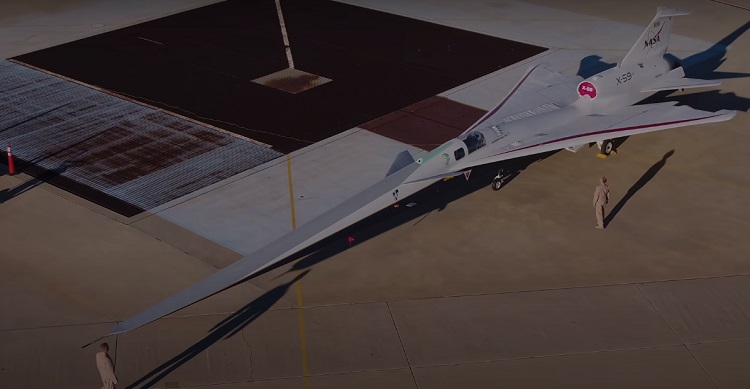NASA and Lockheed Martin’s renowned Skunk Works advanced projects division have officially introduced the X-59 Quiet Supersonic Technology experimental test aircraft, abbreviated as QueSST.
The construction phase of the X-59 is now concluded, initiating the countdown to its inaugural flight.
The success of this experimental test flight holds potential significance for the future of supersonic passenger aviation.
- California RESIDENTS To RECEIVE $500 MONTHLY PAYMENTS In New Guaranteed Income Program: Here Is Who Is Eligible
- Us Job Market Booms With 272,000 New Jobs, But Unemployment Rises Slightly To 4.0%
- Credit Scores Of 720+ See Improved Loan Rates This Week
- Examining The Facts: Fact Check On IRS $8700 Stimulus Check Eligibility & Payment Dates
- Gas Prices On Downward Trend As Fourth Of July Road Trips Approach: AAA
The highly anticipated unveiling occurred at the Skunk Works facility within the US Air Force’s Plant 42 in Palmdale, California.
NASA and Lockheed Martin actively promoted this event, broadcasting the ceremony live on multiple platforms.
Virtual participants worldwide were encouraged to organize their own virtual watch parties.
X-59 Reveals NASA Sonic Blue Touch

The X-59 now presents an impressive appearance, adorned with a recently applied paint scheme featuring a predominantly white fuselage, a NASA “sonic blue” underside, and red accents on the wings.
Before the X-59’s inaugural flight, it will undergo a series of critical assessments, including integrated systems testing, engine runs, and taxi testing, as outlined by NASA.
The initial flight and subsequent test flights are scheduled to take place at Plant 42 before the QueSST aircraft transitions to NASA’s Armstrong Flight Research Center, located alongside Edwards Air Force Base in California.
NASA has previously communicated that the successful completion of the initial flight testing signifies the conclusion of the first phase among the three planned stages of the QueSST project.
The overarching objective of QueSST is to demonstrate that meticulous design considerations can mitigate the noise generated by a conventional sonic boom, transforming it into a “quieter sonic thump.”
This innovative approach aims to prompt a reconsideration of regulations prohibiting commercial supersonic flight over land.
The X-59 is slated to fly at Mach 1.4, approximately 925 miles per hour, over land.
Its distinctive design, shaping, and incorporated technologies are engineered to achieve this with a considerably reduced noise signature.
Phase two of the QueSST program will involve validating the core design’s functionality through flights in the supersonic test range over Edwards Air Force Base.
